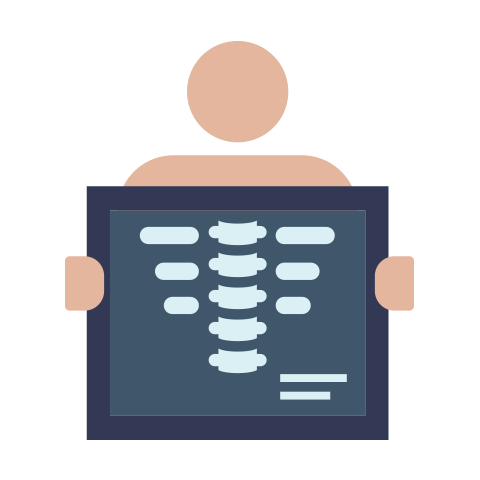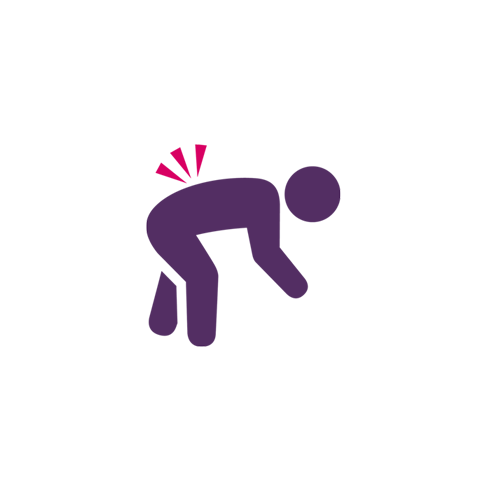For adults with active ankylosing spondylitis

ANKYLOSING SPONDYLITIS FACTS AND SYMPTOMS
WHAT IS ANKYLOSING SPONDYLITIS?
Ankylosing spondylitis (AS) is an inflammatory disease that includes pain and stiffness in the spine and may affect other joints. AS is an autoimmune disease that typically begins in young adulthood, but often gets overlooked or incorrectly diagnosed as pain from a previous injury or aging.
Over time, if left untreated, AS inflammation can damage the spine and cause the spine to fuse, resulting in what some people call “bamboo spine.” This damage to the spine is irreversible.
ANKYLOSING SPONDYLITIS AND AXIAL SPONDYLOARTHRITIS
Ankylosing spondylitis is part of a family of diseases called axial spondyloarthritis (axSpA). AxSpA includes 2 related inflammatory diseases, AS and non-radiographic axial spondyloarthritis (nr-axSpA). Both diseases include symptoms like back pain and may damage the spine. The main difference is that nr-axSpA may not show visible damage on an X-ray, while AS damage may be visible.

WHAT DOES ANKYLOSING SPONDYLITIS PAIN FEEL LIKE?
AS pain is most often felt in the back and along the spine, and can be felt in other places like the hips, ribs, buttocks, and neck. Pain can come and go, and may flare up at times.
WHAT ARE THE MOST COMMON SYMPTOMS OF AS?
HOW DO I KNOW IF MY BACK PAIN IS FROM AS?
The only way to know that your back pain is from AS is to get diagnosed by a doctor, like a rheumatologist. Rheumatologists are doctors that treat many diseases that are difficult to diagnose, like diseases of the spine and autoimmune diseases.
A rheumatologist could help you understand more about your back pain, and if you may be suffering from mechanical back pain or inflammatory back pain.
Watch to learn more about back pain and symptoms of AS from Dr Elizabeth Perkins, as she sits down and talks to real people with AS taking COSENTYX.
Dr Perkins was compensated for her time.
WHO CAN GET ANKYLOSING SPONDYLITIS?
AS affects men and women differently. Compared with men, women with AS typically are younger at onset, are diagnosed later, and have more neck pain and pain in the joints farther away from the spine, like the knees, elbows, and ankles. Women may also have less spinal involvement than men.
WHO IS AT RISK OF GETTING ANKYLOSING SPONDYLITIS?
Individual results may vary. Wendy was compensated for her time.



